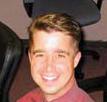The Space Shuttle Cockpit
The Space Shuttle was developed in the 1970s using technology that was quite advanced for its time, including fly-by-wire components and multiple computer screens in the cockpit. Although the electro-mechanical gauges and cathode ray tube (CRT) screens soon became dated, no major upgrades were made to the cockpit for two decades. Part of the reason was simply that the original equipment was extremely reliable. However, it was also bulky and expensive to maintain. A glass cockpit was implemented in the shuttle to help remedy the obsolescence of many of the electromechanical gauges and dials, but that upgrade did not resolve the human factors and usability drawbacks of the cockpit displays. In part to address these deficiencies, NASA is developing a usability oriented modification called the Cockpit Avionics Upgrade (CAU). A key goal of the CAU project is to redesign the displays to improve the crew’s understanding of the on-board systems.
Which brings us to me
In the fall of 1999, one of my managers at NASA Ames Research Center said, “There’s a great new project going on at Johnson Space Center (JSC). They’re upgrading the shuttle cockpit displays. How would you like to spend two weeks at JSC learning about it, then you could participate via telecons.” I said, “That sounds great, but I have to talk to my wife. I already do a number of trips each year. I’ve got to balance this out and still keep this ring on my finger.” It turned out that my wife was quite understanding. I already made a number of conference trips each year, so a two-week trip didn’t seem too excessive.
We need you here
When I talked with folks in person at JSC, they told me candidly, “Two weeks down here is great, but we’d really like you a bit more. Like every other week. For at least one year. What do you think?”
Uh oh. I realized they were right. The project seemed fascinating, but somewhat demanding. So back I went back to my wife—flowers in hand—and told her about this great opportunity. It was clear that I married the right woman. She said, “Go for it. But don’t be leaving home every single week!” I promised that I’d be home every other week plus every weekend, and I kept my promise. In actuality, the trips down to JSC were typically from Monday to Thursday, every other week. The project blossomed, and over the last five years I’ve made dozens of trips to Johnson to work with astronauts, trainers, engineers, mission controllers at others at JSC.
Working side by side & face to face
This was very much a team effort, and it was quite helpful that I was present as much as I was. Typically, small groups of 5–10 people would work on a new display for a several-month period, and the co-location factor allowed for unscheduled, informal communication. Being there in person helped to reduce ambiguity surrounding decisions, speed up the project in terms of information exchange, persona in which we were really strengths and weaknesses.
The more time I spent at Johnson, the more I realized how effective it was to actually collaborate in person. Every time I had a question or needed assistance, there was someone who could help. They were happy to give me one-on-one support and training. If I was going to work in one of the space shuttle simulators and needed to understand the crewmember’s roles during a malfunction, it was easy to find an astronaut trainer who would sit down with me. Without exception, the folks there were helpful and enthusiastic.
And because of the many alliances I had from splitting my time between the two centers, I was able to keep Ames folks fully updated as well. A number of us made trips down to JSC to help support this project; one trip was made to address color characteristics of the shuttle cockpit screens. We collaborated well and were able to put together quite a few display formats. I remember thinking that the “One NASA” theory really held true on this project.
Different measures of success
For me, the basis for this successful collaboration was face-to-face communication. Though it was sometimes stressful being on the road so much, I really learned the importance of being present to work together and ask questions in person. Another measure of success was that in the midst of this project and traveling, my wife and I managed to start a family. My oldest boy got a real kick out of visiting Space Center Houston when he was two to learn all about the “face futtle” which “goes way up in the sky.”
Lessons
- When practical, collocation and face-to-face communication on a project eliminate misunderstandings, establish relationships, make information more easily accessible, and promote a team atmosphere.
- Compromise is key to balancing both family and career goals. Knowing when to prioritize each is important to success in both aspects.
Questions
Is compromise really the way, and is it even possible in today’s competitive environment? Or is alternation the key — periods of putting work first, followed by periods of overcompensation at home?






